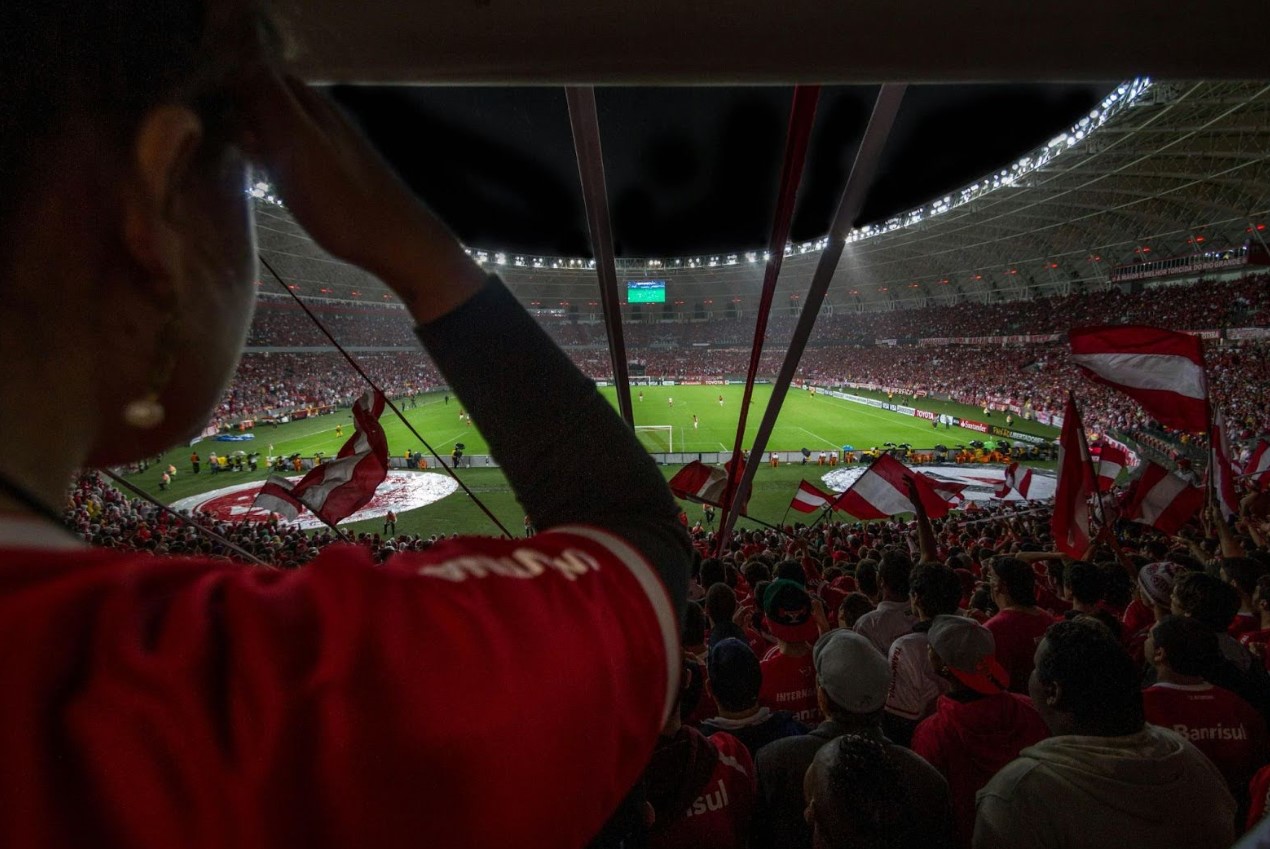Live Football Prediction and In-Play Betting Tips: The Role of Pastime Sports and Games in Modern Football Analytics
Football has long been recognized as one of the mo

Football has long been recognized as one of the most influential pastime sports and games, bridging communities and shaping global culture.
Its evolution from a simple form of recreation into a highly data-driven sport demonstrates how analytical thinking now complements emotional engagement. Today, technological progress allows enthusiasts and analysts to interpret live events through structured data and real-time forecasting tools. The development of live football prediction systems reflects the increasing sophistication of football’s analytical landscape.
Platforms like Leon Bet and similar global operators have contributed to the expansion of analytical environments where live data is processed to interpret team dynamics and match outcomes. Such ecosystems are not limited to entertainment but also play a part in developing predictive algorithms and market-driven insights. Regional markets, including betting tz, further demonstrate how local engagement intersects with global data analysis trends.
Understanding Live Football Prediction
What Is a Live Football Prediction?
A live football prediction is an analysis of match events as they unfold. It relies on ongoing data, player statistics, tactical decisions, and in-game events rather than pre-match assumptions. Unlike static forecasts made before kickoff, live predictions incorporate continuous inputs such as possession changes, player fatigue, substitutions, or unexpected injuries.
Modern predictive tools operate in real time, integrating feeds from digital databases and visual tracking systems. These models produce continuously updated probabilities that estimate potential match outcomes, goal timings, or key player performances. In practical terms, this approach creates a more dynamic picture of a football game’s flow.
Data Points Used in Live Predictions
Accuracy in football live score prediction relies on multiple quantitative indicators. Algorithms typically assess:
- Player passing accuracy and defensive contribution
- Expected goals (xG) and shot placement models
- Pressing intensity and formation changes
- Environmental variables such as weather, field conditions, or referee tendencies
Incorporating these data streams provides more nuanced predictions, particularly in in play football tips where information is time-sensitive. The outcome of a single match can shift dramatically within seconds, making live prediction both complex and context-dependent.
Pastime Sports and Games as Analytical Foundations
The intellectual roots of football analytics can be traced to traditional pastime sports and games that required strategic thinking and pattern recognition. Historical games such as chess or early board sports emphasized foresight and probability—skills that later became integral to predictive modeling in football.
The strategic aspect of these activities laid the groundwork for applying probability theory to team sports. Over time, the same principles that once governed recreational competition evolved into statistical tools for evaluating football’s tactical patterns. Thus, football’s analytical culture can be viewed as an extension of humanity’s long-standing fascination with prediction and structured play.
Moreover, the global accessibility of digital platforms has amplified this relationship. Enthusiasts and analysts now use shared databases to simulate outcomes, test models, and compare predictive accuracy across leagues. This collaborative aspect reflects football’s position not merely as a sport, but as a modern data ecosystem rooted in cultural history.
In-Play Betting Tips and Real-Time Strategy
Definition and Application
Inplay betting tips are strategic insights based on ongoing football matches. They rely on current game conditions rather than pre-event probabilities. Analysts producing these tips focus on how the rhythm of play changes after each significant event—whether it is a goal, red card, or tactical substitution.
Real-time assessment depends on adaptive algorithms that adjust to new data inputs. In contrast to static models, in play football tips combine immediate observation with probability recalibration. This process often requires balancing statistical precision with contextual understanding, as numerical data alone may not capture psychological shifts on the field.
Integrating Analytics into In-Play Tips
Contemporary systems for inplay betting tips integrate live data streams with statistical modeling. For example:
- Real-time dashboards monitor possession and passing efficiency.
- Momentum graphs visualize which team maintains dominance.
- AI-driven alerts indicate when match conditions deviate from expected trends.
This analytical framework allows experts to assess matches within seconds, although such assessments remain inherently probabilistic. The margin of uncertainty underscores football’s unpredictability and the limitations of even the most sophisticated prediction systems.
Football Game Dynamics and Predictive Accuracy
Every football game presents a unique interaction of variables. Predictive systems attempt to translate these variables into numerical probabilities, yet randomness continues to play a defining role. Even within structured datasets, unexpected events—like a deflected goal or an unforeseen substitution—may completely alter the match trajectory.
Models for football live score prediction depend on continuous recalibration. These systems are evaluated not only by immediate accuracy but also by long-term consistency across competitions and seasons. As global datasets expand, predictive algorithms become more nuanced, learning to distinguish between temporary fluctuations and sustained tactical trends.
The global nature of football also introduces cultural and regional diversity into prediction models. Local leagues may exhibit different playing styles, pacing, and statistical reliability, all of which influence predictive accuracy.
Technology and the Transformation of Football Prediction
Technological integration has fundamentally reshaped how analysts engage with live football prediction. Artificial intelligence, big data analytics, and high-frequency data collection now allow near-instant interpretation of match patterns. Tools once reserved for professional analysts have become accessible to broader audiences, contributing to the democratization of football analysis.
Platforms like LEONBet Tanzania exemplify how regional hubs adapt global technology to local preferences. Data accessibility, interface design, and multilingual support enhance engagement among users who follow domestic and international leagues simultaneously. This diffusion of analytics tools encourages informed observation rather than passive viewing, reinforcing football’s role as both a cultural pastime and a field of quantitative study.
Furthermore, real-time tracking technologies—such as optical recognition and motion capture—have improved model reliability. By combining physical performance data with tactical insights, analysts can identify patterns that were previously invisible to traditional scouting methods.
Challenges in Live Prediction and Data Interpretation
Despite technological advancements, live football prediction remains subject to several limitations.
- Latency of data feeds: Even minimal delays in live data transmission can distort real-time accuracy.
- Human bias: Analysts may overinterpret short-term events, leading to overconfident conclusions.
- Algorithmic constraints: Models trained on historical data may struggle to adapt to unique or rare occurrences.
The central challenge lies in balancing statistical reasoning with contextual understanding. Football is not entirely reducible to numbers, and the interplay of emotion, strategy, and momentum continues to defy full quantification.
Comparing Pre-Match and In-Play Prediction Models
Pre-match models and in-play strategies represent two distinct analytical frameworks. Pre-match analysis relies on historical data, team form, and structural factors such as injuries or home advantage. Inplay betting tips, by contrast, emphasize adaptability. They incorporate live data to reassess probabilities as the match evolves.
While pre-match forecasts provide a baseline, in-play predictions refine this understanding by adding context-specific observations. Together, these methods create a layered approach to football analytics, balancing stability with responsiveness.
Football Prediction Communities and Collective Intelligence
Modern football analysis benefits from digital communities that exchange in play football tips and share performance data. Social platforms, discussion forums, and analytical groups foster collaboration among experts and enthusiasts alike. This exchange of knowledge strengthens predictive frameworks by incorporating diverse analytical methods and local insights.
Collaborative prediction models often outperform isolated analysis because they aggregate multiple viewpoints. As community-driven analytics mature, they contribute to the evolution of a more transparent and informed football culture.
The Future of Live Football Prediction
The next stage of football analytics will likely merge data visualization, machine learning, and interactive tools into unified systems. Real-time dashboards could soon provide predictive overlays during broadcasts, allowing viewers to interpret matches statistically as they unfold.
The continued convergence of pastime sports and games with data-driven technologies signals football’s transformation into an analytical discipline as well as a cultural phenomenon. Artificial intelligence will likely refine football live score prediction by identifying emerging tactical patterns and contextualizing them across thousands of matches.
As prediction tools become increasingly integrated into viewing experiences, transparency and methodological rigor will remain essential to maintaining credibility and reliability in this evolving field.

Conclusion – From Cultural Recreation to Analytical Complexity
Football’s journey from a popular pastime to a structured analytical discipline illustrates how tradition and technology intersect. The global appeal of the sport has encouraged continuous experimentation with data, algorithms, and predictive models.
Live football prediction and inplay betting tips now serve as indicators of how deeply analytical reasoning has penetrated the world’s most widely followed game. While outcomes remain uncertain, the process of observation, data interpretation, and tactical evaluation reflects the intellectual dimension of modern football.
Global and regional football markets illustrate how the analytical culture of the sport functions across different levels of engagement. Within this framework, football continues to evolve—connecting heritage with innovation and reflecting the enduring fascination with predicting the unpredictable.







